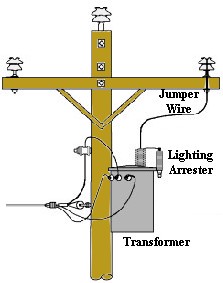Dictionary of Electronics Terms
"A"
"B"
"C",
"D",
"E",
"F",
"G",
"H",
"I",
"J",
"K",
"L",
"M",
"N",
"O",
"P",
"Q",
"R",
"S",
"T",
"U",
"V",
"W",
"X",
"Y",
"Z"
'La' to 'Ld', 'Le to Lil', 'Lim' to 'Ln', 'Lo' to 'Log', 'Log' to 'Lz',
Lead. The opposite of lag, as in one signal lags another by so many degrees. Also a Wire or Connection. The uninsulated part of a wire. A terminal on a component. A heavy metal with the symbol Pb.
Lead-Acid Cell. A cell in an ordinary storage battery in which electrodes are grids of lead containing
an active material consisting of certain lead oxides that change in composition during charging and
discharging. The electrodes or plates are immersed in an electrolyte of diluted sulfuric acid. [Battery Manufacturers].
Lead Inductance. The inductance of the I/O pins of an IC. The inductance of the lead wires connecting the internal components of an electron tube. Lead Inductance in IC pins can cause Ground Bounce.
Leading Edge. The beginning transition of a pulse from low-to-high or high-to-low.
Leadless Chip Carrier. [LCC] A type of plastic or ceramic integrated circuit package that uses terminals that are flush with the package body. Read more about the Leadless Chip Carrier Package
Lead Sheath. A continuous jacket of lead molded around a single conductor or multiple conductor
cable. Generally used to ensure conductors are protected from water or extensive moisture.
Lead Wire. A short length of wire connected to a component or part and used as a lead or terminal, for that component, and used as a connection point to another part.
Leakage Current. The small amount of current that flows through the dielectric between the
conductors of a transmission line. Leakage current is that current which flows through the equipment
conductive paths to a solidly grounded source. A current that does not return through the intended path, but instead "leaks" to ground. A fault current.
Leakage Flux. Magnetic flux lines produced by the primary winding that do not link the turns of the
secondary winding.
Leakage Resistance. The electrical resistance that opposes the flow of current through the
dielectric of a capacitor. The higher the leakage resistance, the slower the capacitor discharges or leaks
across the dielectric. The resistance of a reverse-biased semiconductor junction.
Least Significant Bit. [LSB].
Least Significant Digit. The digit whose position within a given number
expression has the least weighting power.
LED. [Light-Emitting Diode] A semiconductor device that emits incoherent optical radiation when biased in the forward direction. Terms used with LEDs.
Left-Hand Rule for Generators. A rule or procedure used to determine the direction of
current flow in a generator. Also refer to Right-Hand Rule.
Leg. A current-carrying conductor intended to deliver power to or from a load
normally at an electrical potential other than ground.
Legacy. An out-of-date system or component that is still being used. Which could also be a device or component still being used after it's useful life. A legacy part may not yet be obsolete, but would not be recommended for new designs. A system or component no longer in production.
Lenz's Law. The current induced in a circuit, caused by its motion in a magnetic field or a change in its
magnetic flux, in such a direction as to exert a mechanical force opposing the motion or to oppose the
change in flux.
Level Translator. A circuit or component that translates an input voltage level to a different voltage level at the output. An integrated circuit that shifts or translates between two different logic levels allowing them to be interconnected as in a 10124 [TTL to ECL translator]. Also refer to How to Translate Logic Levels.
Life Cycle. The stages that a product goes through from conception to obsolescence, following a bell curve. There are six distinct phases of a Products Life Cycle:
Stage 1; Product Introduction.
Stage 2; Product Growth [rapid sales growth]
Stage 3; Product Maturity [sales grow stable, left of curve peak]
Stage 4. Product Saturation [sales begin to level out, right of peak]
Stage 5. Product Decline [Sales begin to decline, Obsolete]
Stage 6. Product Phase-Out Sales continue decline, Lifetime buys]
Products in either stage 5 or 6 are not recommended for new designs. Stage 6 is also called End-Of-Life.
Life Test. An electrical test designed to over-stress the component being tested to simulate a condition longer than the one tested for. That is a test conducted over a short period of time but is used to simulate a much longer operating condition, as in the life of the component. Another common term would be, Accelerated Stress Testing. Also refer to Unit Test Acronyms.
Light-Activated Silicon-Controlled Rectifiers. [LASCR] A pnpn which uses light to supply the gate current.
Lightbulb. The bulb used in a lamp.
Light-Emitting Diode. [LED] A PN-junction diode that emits visible light when it is forward
biased. Depending on the material used to make the diode, the light may be red, green, or amber.
More on LED Terms, or LED Manufacturers.
Lighthouse Tube. An electron tube shaped like a lighthouse that is designed to handle large amounts
of power at uhf frequencies.
Lightning Arrestor. A protective spark gap device for protecting different pieces of equipment such as, power poles and towers, power transformers, and circuit breakers from damage from lightning strikes by shunting the currents to ground.
Light-Pipe. A cylindrical tube or fiber used to pass light from one location to another. [Light Pipe Manufacturers].
Light-Rays. Light waves emitting from a source in straight lines.










